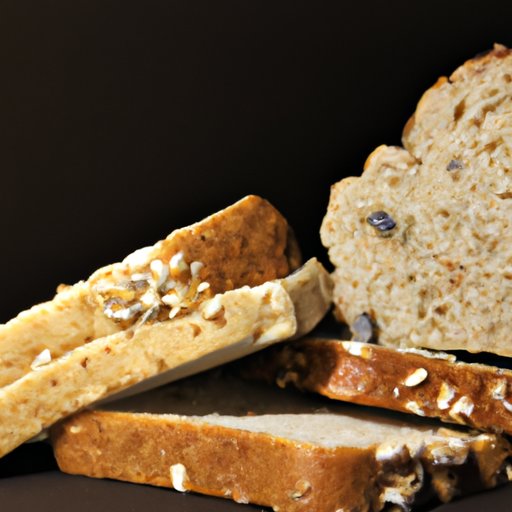Introduction
Wheat bread is often seen as a healthier option than white bread, but is it really better for you? This article will explore the nutritional benefits and potential health risks of eating wheat bread compared to white bread, as well as the role of wheat bread in weight loss and diabetes management.
Comparing the Nutritional Benefits of Wheat Bread vs. White Bread
When comparing the nutritional benefits of wheat bread versus white bread, there are some key differences. Wheat bread is typically higher in macronutrients such as protein, fat, and carbohydrates. It also contains more micronutrients such as vitamins and minerals. In addition, wheat bread is usually higher in fiber content than white bread.

Examining the Health Risks of Eating Too Much White Bread
Eating too much white bread can increase the risk of certain chronic diseases. Studies have shown that a diet high in refined carbohydrates, such as those found in white bread, is associated with an increased risk of type 2 diabetes. Eating too much white bread has also been linked to an increased risk of heart disease and obesity.

Exploring the Health Benefits of Eating Whole Grain Breads
Whole grain breads, such as wheat bread, provide a number of health benefits. Whole grain breads are rich in dietary fiber, which can help reduce cholesterol levels and improve digestive health. Eating whole grain breads has also been associated with a reduced risk of certain chronic diseases, such as cardiovascular disease and type 2 diabetes.

Investigating the Difference in Glycemic Index Between Wheat and White Bread
The glycemic index (GI) is a measure of how quickly a food raises your blood sugar level. Foods with a low GI take longer to digest, resulting in a slower, more gradual rise in blood sugar. Wheat bread has a lower GI than white bread, which means it takes longer to digest and results in a slower rise in blood sugar.
Analyzing the Pros and Cons of Eating Wheat Bread
When considering the pros and cons of eating wheat bread, there are some important factors to consider. On the plus side, wheat bread is higher in fiber, vitamins, and minerals than white bread. It also has a lower glycemic index, making it a good choice for people with diabetes. On the downside, wheat bread can be more expensive than white bread and may not taste as good to some people.

Investigating the Role of Wheat Bread in Weight Loss Diets
Wheat bread can be a beneficial part of any weight loss diet. The high fiber content of wheat bread helps to keep you feeling fuller for longer, while the lower glycemic index prevents sudden spikes in blood sugar. By replacing white bread with wheat bread, you can create a low-calorie, high-fiber option that can help you achieve your weight loss goals.
Examining the Role of Wheat Bread in Diabetes Management
For people with diabetes, wheat bread can be a beneficial part of their meal plan. The lower glycemic index of wheat bread can help to control blood sugar levels and reduce the risk of complications. In addition, the high fiber content of wheat bread can help slow the rate at which glucose is absorbed into the bloodstream, helping to keep blood sugar levels stable.
Conclusion
Overall, wheat bread is a healthier option than white bread. It is higher in macronutrients, micronutrients, and fiber, and has a lower glycemic index. Eating wheat bread can help reduce the risk of certain chronic diseases, aid in weight loss, and improve diabetes management. While it may be more expensive and less tasty than white bread, wheat bread is definitely worth the investment for its numerous health benefits.
(Note: Is this article not meeting your expectations? Do you have knowledge or insights to share? Unlock new opportunities and expand your reach by joining our authors team. Click Registration to join us and share your expertise with our readers.)
